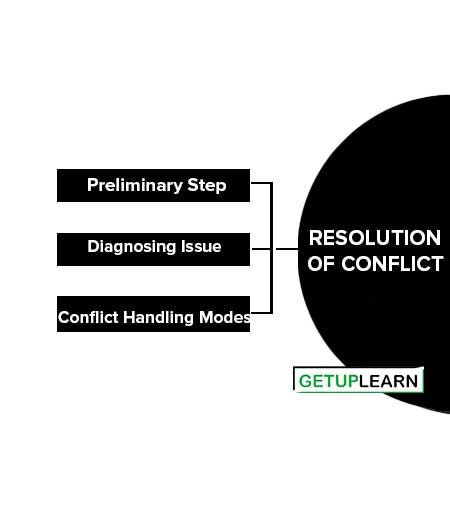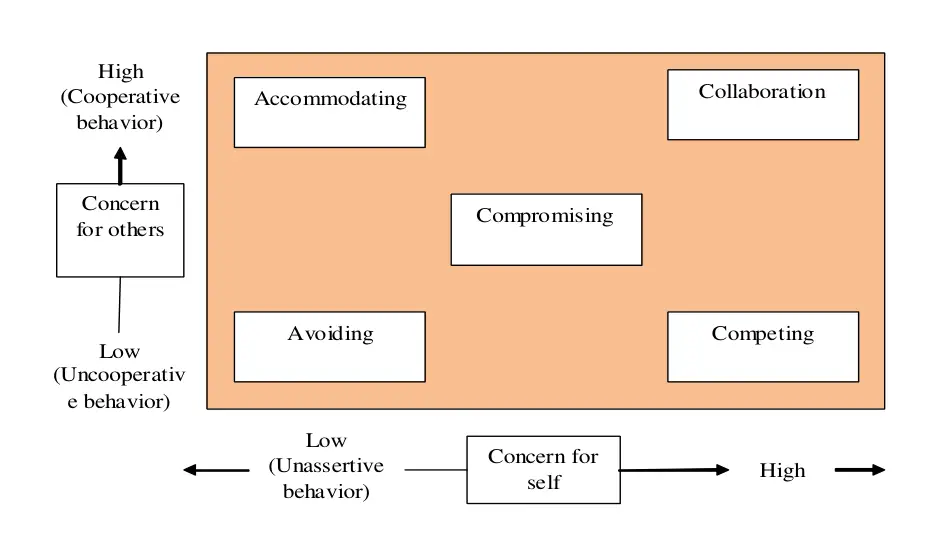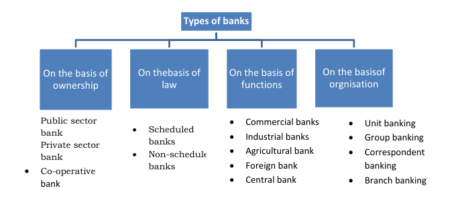Table of Contents
Conflict Process
The process of conflict management has the following steps:
- Stage I: Potential Opposition or Incompatibility
- Stage II: Cognition and Personalization
- Stage III: Intentions
- Stage IV: Behavior
- Stage V: Outcomes

Stage I: Potential Opposition or Incompatibility
This stage concludes the conditions that create opportunities for conflict to arise. The conditions are as follows:
- Communication
- Structure
- Personal Variables
Communication
Communication becomes a source of conflict due to semantic difficulties, is understanding, and “noise” (distortion) in the communication channels. Differing word connotations, jargon, insufficient exchange of information, and noise in the communication channel are all barriers to communication and potential antecedents to conflict.
Structure
The term structure includes variables such as size, degree of specialization, jurisdictional clarity, member-goal compatibility, leadership styles, reward systems, and the degree of dependence. Size and specialization act as forces to stimulate conflict.
The larger the group and the more specialized its activities, the greater the likelihood of conflict. The potential for conflict is greatest where group members are younger and turnover is high. The greater the ambiguity in responsibility for actions lies, the greater the potential for conflict.
Personal Variables
Personal variables include individual value systems and personality characteristics. Certain personality types lead to potential conflict. Value differences are the best explanation for differences of opinion on various matters.
Stage II: Cognition and Personalization
Antecedent conditions lead to conflict only when the parties are affected by and aware of it. Conflict is personalized when it is felt and when individuals become emotionally involved. Emotions play a major role in shaping perceptions.
Negative emotions produce oversimplification of issues, reductions in trust, and negative interpretations of the other party’s behavior. Positive feelings increase the tendency to see potential relationships among the elements of a problem, to take a broader view of the situation, and to develop more innovative solutions (Robbins, 2003).
Stage III: Intentions
The primary conflict-handling intentions are represented as follows:
-
Cooperativeness: “The degree to which one party attempts to satisfy the other party’s concerns.”
-
Assertiveness: “The degree to which one party attempts to satisfy his or her own concerns.”
-
Competing: When one person seeks to satisfy his or her own interests, regardless of the impact on the other parties to the conflict.
-
Collaborating: When the parties conflict each desire to fully satisfy the concerns of all parties. The intention is to solve the problem by clarifying differences rather than by accommodating.
-
Avoiding: A person may recognize that a conflict exists and want to withdraw from it or suppress it.
-
Accommodating: When one party seeks to appease an opponent, that party is willing to be self-sacrificing.
- Compromising: When each party to the conflict seeks to give up something, sharing occurs, resulting in a compromised outcome. There is no clear winner or loser, and the solution provides incomplete satisfaction of both parties’ concerns.
Stage IV: Behavior
The behavior stage includes the statements, actions, and reactions made by the conflicting parties. These conflict behaviors are usually overt attempts to implement each party’s intentions. It is a dynamic process of interaction with a continuum.
At the lower part of the continuum, conflicts are characterized by subtle, indirect, and highly controlled forms of tension. Conflict intensities escalate as they move upward along the continuum until they become highly destructive. Functional conflicts are typically confined to the lower range of the continuum.
Stage V: Outcomes
Outcomes may be functional – improving group performance, or dysfunctional in hindering it. Conflict is constructive when it (Robins, 2003):
- Improves the quality of decisions.
- Stimulates creativity and innovation.
- Encourages interest and curiosity.
- Provides the medium through which problems can be aired and tensions released.
- Fosters an environment of self-evaluation and change.
Outcomes may be dysfunctional as well. They are as follows: Uncontrolled opposition breeds discontent, which acts to dissolve common ties and eventually leads to the destruction of the group. Undesirable consequences include a retarding of communication, reductions in group cohesiveness, and subordination of group goals to the primacy of infighting between members.
Conflict can bring group functioning to a halt and potentially threaten the group’s survival. The demise of an organization as a -result of too much conflict is not as unusual as it might first appear.
Resolution of Conflict
The following steps must be taken to resolve a conflict already arisen:

Preliminary Step
This step involves knowing of full details of the conflict and the first thing to note is the stage of conflict. The more advanced the stage of conflict, the more efforts are required to resolve it. Moreover, the strategy used is also dependent upon the stage of conflict.
Diagnosing Issue
Under this stage, the issues involved should be analyzed and understood what the conflict is about. It may arise due to facts, goals, methods, and values. The next thing in diagnosing is to know why these differences have arisen. The differences may be informal, perceptual, role factors, and the like.
Conflict Handling Modes
Below are given some conflict-handling modes.
Conflict Management Techniques
Conflict expert Kenneth Thomas notes that there are several basic reactions that can be thought of as styles, strategies, or intentions for dealing with conflict.
As shown in the figure given below these approaches to managing conflict are a function of both how assertive one is trying to satisfy one’s own or one’s group’s concerns and also how cooperative one is trying to satisfy those of the other party or group. The following are the conflict management techniques:

Avoiding (Withdrawal)
The avoiding style is characterized by low assertiveness of one’s own interest and low cooperation with the other party. Avoiding can provide short-term stress reduction from the rigors of conflict as it doesn’t change the situation.
Accommodation (Smoothing)
This style is low in assertiveness and high in cooperativeness. Parties are accommodative, cooperative, and prepared to make reasonable sacrifices for resolving the conflict.
The emphasis is on the common interest of the conflicting groups and the de-emphasis on their differences. The technique can be used with a temporary solution that is needed in the short run.
Competing (Dominance)
A competing style tends to maximize assertiveness for one’s own position and minimize cooperative responses. In doing so one tends to frame the conflict in strict win-lose terms.
Full priority is given to one’s goals, facts, or procedures. The competing style holds promise when someone has a lot of power and you don’t have to interact with the other party in the future.
Compromise
Compromise combines immediate levels of assertiveness and cooperation. Thus it is itself a compromise between pure competition and pure accommodation.
Compromise isn’t so useful for resolving conflicts that stem from power asymmetry, because the weaker party may have little to offer the stringer party. It is a good fall-back position if other strategies fail.
Collaboration
In the collaborating mode, both assertiveness and cooperation are maximized in the hope that an integrative agreement occurs that fully satisfies the interest of both parties.
It probably works best when the conflict is not intense and when each party has information that is useful to the other. Effective collaboration can take time and practice to develop, it frequently enhances productivity and achievement. Collaboration also helps to manage conflict within the organization.
FAQ’s Section
What is the conflict process?
These are the steps of the conflict process:
1. Stage I: Potential Opposition or Incompatibility
2. Stage II: Cognition and Personalization
3. Stage III: Intentions
4. Stage IV: Behavior
5. Stage V: Outcomes.
What are the conflict management techniques?
Avoiding, Accommodation, Competing, Compromise, and Collaboration are the conflict management techniques.

